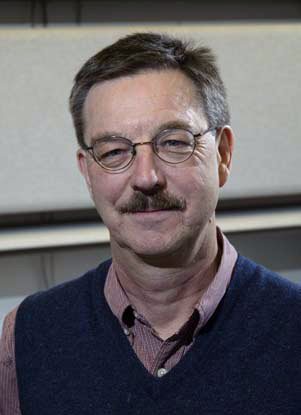 Our research focuses on understanding chemical reactions occurring at surfaces with particular emphasis on catalysis, tribology and on the formation of thin films with tailored properties. Experiments are generally carried out in ultrahigh vacuum (where the pressure is ~1x10-10 Torr) enabling us to study clean, well-characterized samples. A wide range of analytical techniques are used to probe the interfacial chemistry including reflection absorption infrared spectroscopy (RAIRS), low-energy electron diffraction (LEED) intensity versus energy measurements, low-energy ion scattering, Auger and photoelectron spectroscopies, molecular beam methods, temperature-programmed desorption and atomic force microscopy (AFM) and scanning tunneling microscopy (STM). In addition, capabilities are available for carrying out high-pressure catalytic reactions using a reactor cell incorporated in an ultrahigh vacuum chamber and for making tribological measurements in ultrahigh vacuum.
Our research focuses on understanding chemical reactions occurring at surfaces with particular emphasis on catalysis, tribology and on the formation of thin films with tailored properties. Experiments are generally carried out in ultrahigh vacuum (where the pressure is ~1x10-10 Torr) enabling us to study clean, well-characterized samples. A wide range of analytical techniques are used to probe the interfacial chemistry including reflection absorption infrared spectroscopy (RAIRS), low-energy electron diffraction (LEED) intensity versus energy measurements, low-energy ion scattering, Auger and photoelectron spectroscopies, molecular beam methods, temperature-programmed desorption and atomic force microscopy (AFM) and scanning tunneling microscopy (STM). In addition, capabilities are available for carrying out high-pressure catalytic reactions using a reactor cell incorporated in an ultrahigh vacuum chamber and for making tribological measurements in ultrahigh vacuum.Work in the area of catalysis emphasizes understanding catalytic reaction pathways at a molecular level, focusing on the synthesis of vinyl acetate on palladium and gold palladium alloys and on understanding the molecular origins of chiral catalysis.
We are also investigating the frictional properties of lubricant additives that thermally decompose on the surface to form a solid lubricating film. This work has primarily focused on the way in which sulfur-, phosphorus- and chlorine-containing molecules react since these types of molecule are often used as lubricant additives. The frictional properties of well-characterized thin films are explored in ultrahigh vacuum in order to correlate the physical properties of the films and substrates with the resulting frictional properties.
We are also investigating the electronic properties of metal-containing molecular wires to obtain a fundamental understanding of electron conduction at the nanoscale. This work is funded from an array of sources, including industry, the National Science Foundation, the U.S. Department of Energy, the American Chemical Society, and the U.S. Navy.





 Home
Home